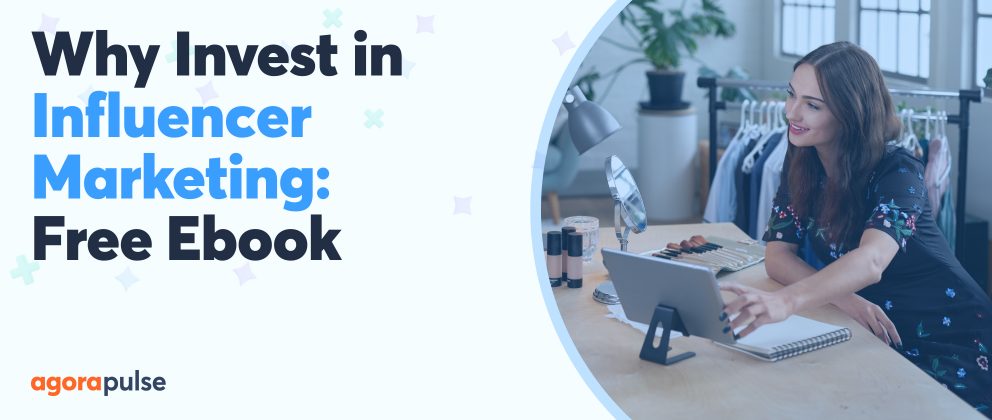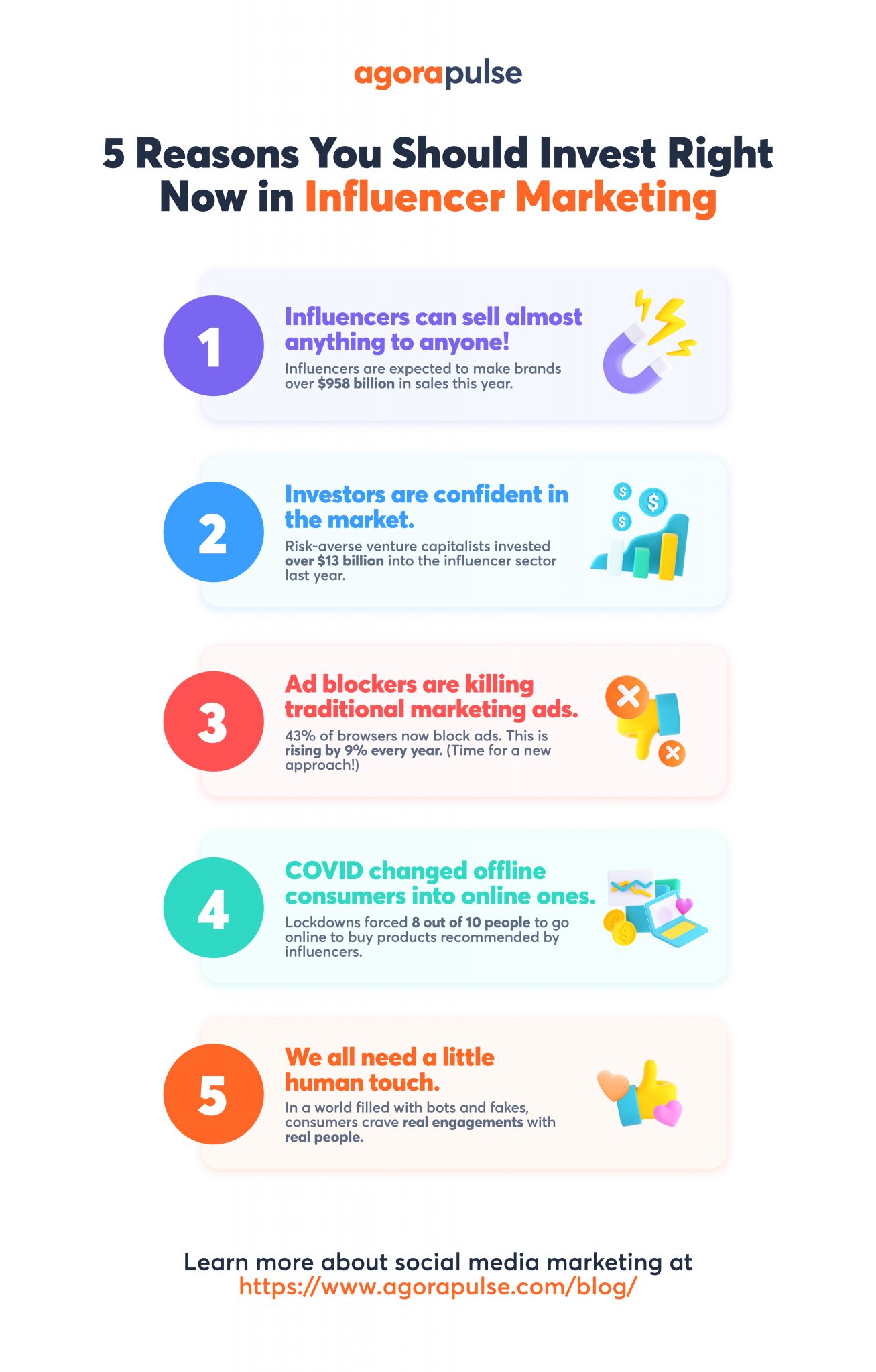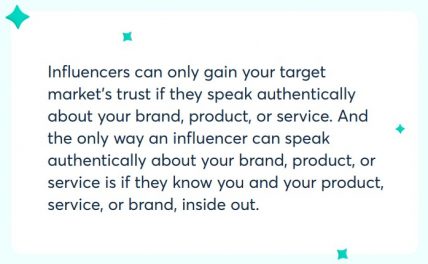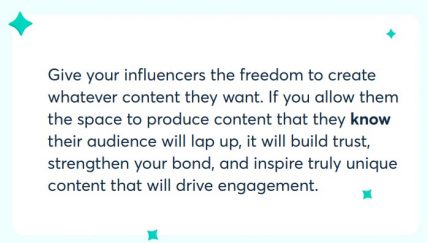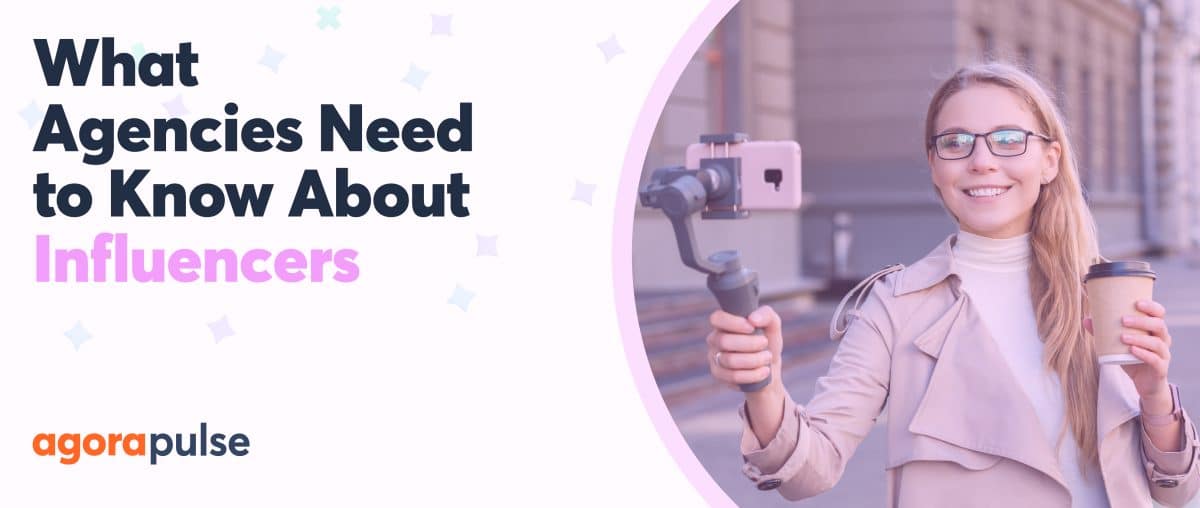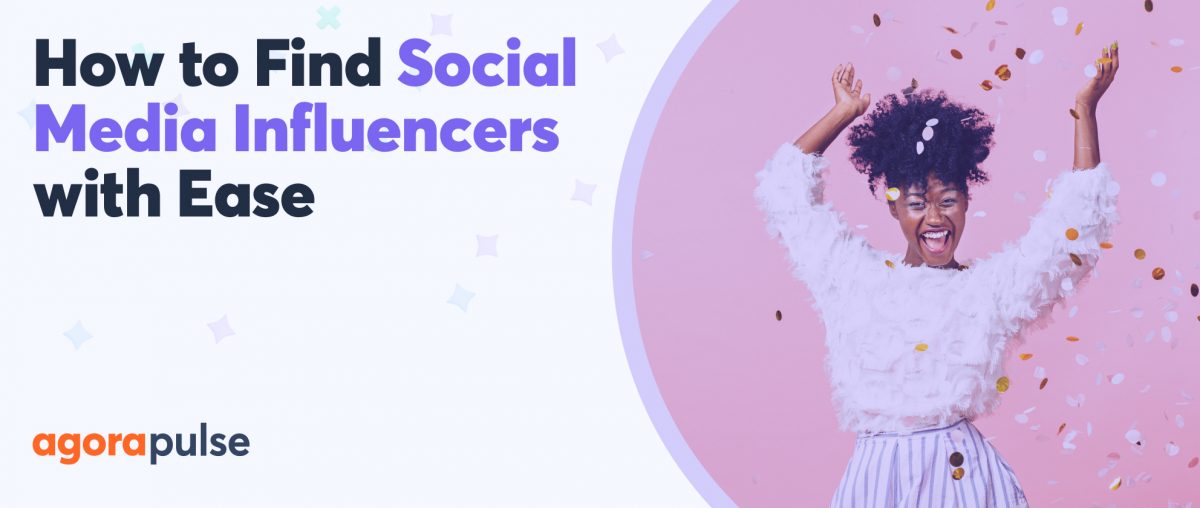Do you remember Nike Air Jordans? In 1984, Nike made over $70 million just for getting iconic basketball player Michael Jordan to wear their sneakers during basketball matches.
Was this the beginning of influencer marketing?
Over the last few years, the influencer marketing industry has exploded. Especially with the introduction of social media platforms and the rise of technology.
Now, there are roughly between 3.2 and 37.8 million influencers worldwide.
“The global influencer marketing market value stood at 21.1 billion U.S. dollars as of 2023, having more than tripled since 2019,” according to Statista.
This explosion in influencer marketing popularity, however, has muddied the waters for many marketing execs.
The rules of the game are not so simple anymore. Not with trust issues, compliance problems, fraud, and damage to brand reputation at stake.
So, what, where, and how should you invest in influencer marketing nowadays?
To help you answer those questions, this article is packed with insights from social media management experts at Agorapulse and social media industry leaders.
Packed with how-to information and expertise from all that combined experience, this e-book will give you the clarity, direction, and inspiration you need to supercharge your influencer marketing tactics.
5 Reasons to Invest in Influencer Marketing
Why is influencer marketing still one of the most effective and scalable marketing tactics you can have in your ecosystem?
1. The value of influencer-driven sales
The influencer marketing industry is forecasted to bring in $21.2 billion dollars in 2023.
2. Increasing investment in the industry
In 2021, venture capitalists invested an estimated $13.8 billion into the influencer marketing sector, proving that confidence in influencer marketing remains strong.
3. The growth in ad-blocking tools
The average ad-blocking rate is currently sitting at 43% and continues to rise by around 9% YoY. More traditional marketing ads are losing their visibility and their power.
If ads are becoming redundant, what better way to get your marketing messages across than with influencer marketing?
4. COVID-19 changed offline consumers into online ones
While many sectors suffered during the global pandemic, influencer marketing flourished.
Global lockdowns forced people to go online to research and buy products, many of which were recommended by influencers. As we continue to find our “new normal,” this is a trend that’s sticking around.
In 2022, 8 out of 10 consumers bought something after it was recommended by an influencer.
5. The craving for real, human connection
In a tech-based world filled with AI-powered chatbots, autogenerated feeds, and computer-calculated algorithms, consumers are craving (to quote rock legend Bruce Springsteen) a little human touch.
The influencer space gives brands the perfect opportunity to satisfy this craving by offering their audience the chance to engage with real, authentic people—not robots.
However, to get the maximum value from your influencer marketing efforts, you need to know about these current trends to factor into the
decisions you make:
- What type of influencers to work with
- How you approach influencers
- How you work with influencers
- The type of content you want your influencers to create
Types of Influencers: Who to Work With
Consumers aren’t stupid. They know what influencers are. They understand that they’ve been paid to promote a product or service.
Consumers can tell the difference between a person who genuinely likes and uses a product or service, and one who’s just promoting it to bankroll their next sports car.
Because consumers are so tuned into disingenuity and insincerity, the biggest trend infiltrating the entire influencer sector is authenticity.
“Instagram was where people boasted about the best food, holidays, cars, hotels, and homes. TikTok has changed that, with its focus on realism, consumers are increasingly engaged by honesty and integrity.” — (Influencer Marketing Tips and Trends for 2022, Talking Influencer)
The focus on authenticity has changed the landscape for influencers.
Consumers now have more respect for those who speak the truth and aren’t afraid to expose the true reality of their lives as opposed to those influencers who fill their feeds with seemingly perfect lifestyles and heavily filtered sunshine and rainbows. Those types of influencers are now unrelatable and unauthentic rather than admired and envied.
“We used to work with influencers on a bigger scale, but we now leverage micro-influencers. We don’t care about [the number of] followers because for us, the most important part of any campaign is engagement and how that influencer has built a relationship with their community.” — (Nicole Ponce, Semrush Communications and Influencer Marketing Lead)
As a result, the smaller micro-creators or nano-influencers are being chosen over the big celebrity or macro-influencers who churn out the flawless content, posting ad, after ad, after ad, after ad.
“We primarily focus on nano- and micro-influencers. They’re easy to work with and have so much credibility with their followers. The nano- and micro-influencers are the sweet spot for the industries we work in.” — (Amy Tischler, Simply Social Media co-founder)
Micro Influencers Are Brands’ Favorite
Micro-or nano-influencers might have fewer followers, but brands choose to work with them over macro-influencers for the following reasons.
They are authentic
Micro-influencers don’t just promote products to make an easy buck. They open themselves up and share aspects of their personal lives with their followers. They take them with them wherever they go.
Micro-influencers see their followers more as friends than just prospects who are primed to buy. That makes micro-influencers more authentic and relatable, which means that their followers are more naturally inclined to be receptive when they post promo content.
They are passionate
Micro-influencers are notoriously picky about the brands they work with and the products or services they promote. So, if you get a micro-influencer on board, they’re likely to be as passionate as you are about your brand, product, or service. And, as we know, passion sells.
Plus, because micro-influencers don’t work with just anybody, their passion will be real and will come across as effortlessly authentic.
They are affordable
On average, a nano- or micro-influencer might charge a brand anywhere from $10 to $500 per post. A macro-influencer will charge upwards of $5,000 per post. Sometimes, they’ll even demand as much as $10,000 for one single piece of content!
If you choose to go with nano- or micro-influencers, who also have better engagement rates, you could develop deeper connections with your target audience and stretch your marketing budget further to last longer.
They are engaging
Micro-influencers with fewer than 25,000 followers have an average engagement rate of around 7%. Macro-influencers who have between 500,000 and one million followers have an average engagement rate of just 1.3%.
Micro-influencers can drive higher engagement because they have fewer followers and more time to reach out.
They are trusted
Their little family of followers mean the world to micro-influencers, and they often prioritize building a relationship based on trust with them.
So, these influencers will only work with brands that they like and respect, or promote a product or service that they genuinely believe in and would use themselves. Their followers trust them, which means their followers will, therefore, also trust you. It’s like trust by osmosis.
“[As an influencer] I want to make sure that what I post is authentic to what I truly believe. I make sure that whatever I show on my social media, I can stand behind it. It has to be legitimate. If it’s a product that I’m talking about, I want to make sure it’s something I actually use. It’s something I like, enjoy, and believe in. I want to genuinely mean everything I say. Otherwise, it feels slimy, it feels inauthentic, it feels bad.” — (Gracie Ryback, Amazon influencer, content creator)
But the consumer demand for authenticity isn’t telling us to ditch the celebrity or macro-influencers completely.
Even though macro-influencers can be costly to work with, if they’re respected figures within a specific industry and speak with clear authenticity, they can be effective ambassadors for your brand, product, or service. Especially in the B2B space.
Agorapulse, for example, uses authentic, well-known macro-influencers to promote the benefits of having an all-in-one social media management platform:
“I’m targeting people who are well-known. They’re speaking at events, they’re on panels, and they’re creating content about our tool and about the social and marketing industry overall … They’re a respected voice in the space.” — (Mike Allton, head of strategic partnerships, Agorapulse)
The moral of this story is: Being authentic wins over flashy pictures and a big following.
How to Work Effectively With Influencers
Let me ask you this: If you went to the gym once or twice, over the course of a year, would you end up with the body of your dreams?
Heck, no! It would take ongoing, consistent, and long-term commitment to get that type of physique.
The same applies to influencer marketing.
If you work with an influencer once or twice a year on one-off posts or specific campaigns, do you expect that influencer to generate a ton of interest in your brand, product, or service, or drive much engagement?
Heck, no! Even the best, most trusted influencers would struggle to convince their audience to buy into your brand, product, or service with just one or two sponsored posts.
It comes back to the influencer marketing word of the year: authenticity.
Your target market will only get excited about your brand, product, or service if they see regular content about it from influencers that they trust.
So, finding perfect-fit content creators, building mutually beneficial relationships with them, and adopting an always-on approach to your influencer marketing strategy is critical.
How to Find the Right Influencers
To work with influencers who will represent you authentically in front of their actively engaged followers, you need to find people perfectly aligned with your brand, product, or service.
There are two key areas to look at when trying to track down your perfect-match influencer:
1.Their audience
Do their followers match your target market demographic? Are they interacting with their audience (i.e., do the influencers respond
to their audience)?
2. Their content
Are the influencers creating content that’s creative and engaging? Is it authentic? Does it align with your brand values or messaging? Is it a good fit with your brand aesthetically? What other brands do they work with and how do they position their products or services? Are they able to naturally blend promotional posts with their usual day-to-day content?
“We spend countless hours on the apps, engaging and building relationships with the influencers who we work with to make sure that their storytelling and their style matches our clients and how they would like their brand represented.” — (Amy Tischler, Simply Social Media co-founder)
Those two facts will tell you whether your influencer is a good fit for your brand and, therefore, worth approaching.
How to Find Instagram Influencers
How to Approach Micro-Influencers
Just because micro-influencers have a smaller following than mega macro-influencers do, it doesn’t mean that they’re easier to approach.
In fact, they can be harder.
Because micro-influencers are all about authenticity, they’re incredibly fussy about who they work with.
Think of it this way: You only want to work with people who truly love your products and can, therefore, represent your brand in the right way.
Micro-influencers feel the exact same way.
In fact, 44% of micro-influencers will only work with a brand if the opportunity is relevant to them and their audience. They are fiercely protective of their reputation and their followers.
That means they’ll only show content that’s genuine, honest, and real, and will only work with brands that they respect.
It has to be a perfect fit for both parties and there needs to be trust on both sides.
So, approach micro-influencers with caution.
How to Build Mutually Beneficial Relationships With Perfect-Fit Influencers
Relationships are the key to influencer marketing success.
If you have an ongoing two-way relationship with your influencer, it’s a big win-win for both parties.
They’ll be happy to keep posting regular, authentic promotional content because they believe in you and your brand. They’ll feel confident about posting promotional messages, knowing that their followers will be receptive to them.
As a result, you’ll reap the benefits.
So how do you build a two-way, mutually beneficial relationship with your influencers?
Treat influencers as friends
Don’t treat a relationship with an influencer like you might do with, say, a supplier: purely professional.
If you have a stiff, over-professional relationship centered around the financial transaction part of the partnership, rather than the bond between the two of you, they’ll see you as nothing more than a source of income.
And what type of content will that inspire?
The uninspiring type, that’s what.
“We’re definitely always saying we were friends with our influencers. They’re, like, I think we’ve grown together.” — (Nicole Ponce, Semrush Communications and Influencer Marketing Lead)
Don’t micro-manage
You need to have some say in what type of content your influencers post: You need to let them know what your brand guidelines are, what the key
objectives are, and what the message needs to be.
But ultimately, place the control in the hands of your influencer.
They’re the experts in content creation, so trust them.
Scratch their back, and they’ll scratch yours
A mutually beneficial relationship means you both benefit from the relationship. You give them the substance to create and post great content that drives engagement and increases their following, and you benefit from getting your brand, product, or service in front of a wider, engaged audience.
“It’s really important that we see the relationship as long term, and that we grow together. We’ll help boost your visibility, give you opportunities to be on our blog, or give you some visibility on our YouTube, etc.
As long as you are teaching and giving back, we give you the open realms to do the same thing … We build relationships from beginning to end. I’ll give you whatever you need and then at some point, if we need something to return, we can leverage that.” — (Nicole Ponce, Semrush Communications and Influencer Marketing Lead)
The Best Type of Content You Want Your Influencers to Create
We’ve established that, to build a mutually beneficial relationship with your influencers, you need to give them the freedom to create the content they know their audience will love.
But you do also need to make sure that what they’re creating works for you, too.
You want the content they create to drive as much engagement as possible.
What type of influencer content drives the most engagement?
Video content
This isn’t a shock. With the global rise of 5G and fiber Internet, video content has become much more accessible to many more people over the last few years.
In fact, 55% of the US population spends nearly two hours a day watching online videos.
So it’s no surprise that video content has become a firm favorite with brands and influencers.
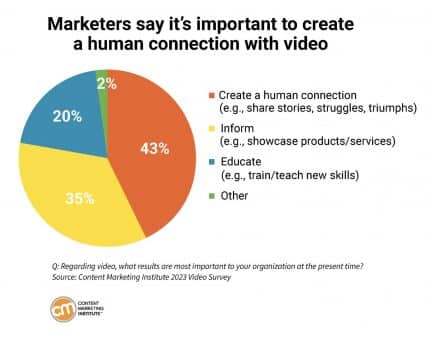
Marketers say it’s important to create a human connection with video, according to a Content Marketing Institute report.
Although text and images aren’t dead, TikTok and YouTube are on the rise. Even platforms like Twitter and Facebook are encouraging more video content.
But it’s not just any old video content: Video live streaming, especially, is fast becoming the influencer marketing tactic of the year.
54% of consumers want to see more live video content from the brands they support. Some 45% would even pay for a live video from their favorite influencer.
In response to this, Amazon and Facebook have developed Livestream shopping tools and Partnerships. TikTok is increasing its focus on live streaming and broadcasting. And Instagram has stepped up its live video capabilities, making it easier for influencers to go live with their audience.
Live content shows influencers at their most stripped back. I mean, you can’t get more authentic than exposing yourself to thousands of people in a live, unscripted video.
Customers recognize this bravery and vulnerability, and reward those that do it with more meaningful connections and higher engagement levels.
That engagement inevitably leads to more conversions.
In fact, it’s estimated that sales through live streaming are likely to reach $500 billion by 2023.
It would, therefore, be a rookie error if you didn’t consider collaborating with your influencers to create authentic video content. Especially when you consider that video viewers retain 95% of a message when they watch a video, compared to 10% when they read it in text.
Key Influencer Marketing Takeaways
Despite a lack of consumer trust, problems with fraud and compliance, and a concern about the damage influencers can inflict on a brand’s reputation, influencer marketing is most definitely not out of the race:
On average, influencer marketing brings in 11X the Social Media ROI than traditional social media ads do.
Influencers have an average engagement rate of around 4.7%, and an average conversion rate of around 2.5%.
Benefits of influencer marketing
To get the most out of your influencer marketing tactics, follow the latest trends:
- Focus on authenticity by choosing to work with niche nano- or micro-influencers who pride themselves on staying true to their followers, not their bank manager.
- Use social media listening tools and stalk social media platforms, forums, and feeds to find perfect-fit micro-influencers who are talking to and engaging with the same target market as you, and who are posting content that perfectly aligns with your brand.
- Approach your chosen influencers with authenticity. Don’t sell yourself. Sell the value you can offer. Explain how your product or service will improve their reputation, make them look good, and benefit their followers.
- Build a solid two-way relationship with your influencers so that they continue to post inspiring content that represents your brand in exactly the right way, and you get the engagement, leads, and conversions you’re after.Do this by:
- Trusting them to create and post content that will engage their followers
- Treating them as friends, not business acquaintances
- Supporting them as much as you can to help them build up their following
and increase their reach
- Work with your influencers to create top-notch video content. Suggest doing a live video stream together. If they tell their followers they have a live stream with a brand expert, their credibility as an influencer will sky-rocket. And you’ll get to meet your target audience first-hand, hear what they think, and build relationships with them directly.
Prove the Social Media ROI of Your Social Media Marketing
Measure the Social Media ROI of your investment in influencer marketing by using Agorapulse.
Agorapulse’s built-in ROI tool can automatically add UTM parameters to the links that your influencers are using in their content. This feature also connects to Google Analytics, so you can see exactly how many leads and conversions your influencers are bringing into the funnel.
Conclusion
For a free demo, contact the sales team, or to try it for yourself, sign up for a free trial (no credit card required).

